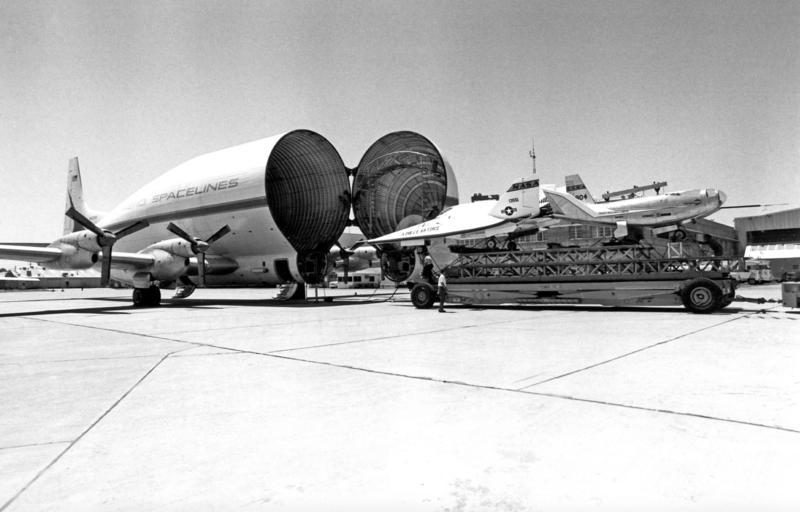MAKE A MEME
View Large Image

| View Original: | B377SGT_Super_Guppy_on_Ramp_Loading_the_X-24B_and_HL-10_Lifting_Bodies_DVIDS845948.jpg (3000x1921) | |||
| Download: | Original | Medium | Small | Thumb |
| Courtesy of: | commons.wikimedia.org | More Like This | ||
| Keywords: B377SGT Super Guppy on Ramp Loading the X-24B and HL-10 Lifting Bodies DVIDS845948.jpg en E76-30317 The Aero Spacelines B377SGT Super Guppy was at Dryden in May 1976 to ferry the X-24 and HL-10 lifting bodies from the Center to the Air Force Museum at Wright-Patterson Air Force Base Ohio The oversized cargo aircraft is a further modification of the B377PG Pregnant Guppy which was built to transport outsized cargo for NASA's Apollo program primarily to carry portions of the Saturn 5 rockets from the manufacturer to Cape Canaveral The original Guppy modification incorporated the wings engines lower fuselage and tail from a Boeing 377 Stratocruiser with a huge upper fuselage more than 20 feet in diameter The Super Guppy further expanded the fuselage replaced the original piston engines with more powerful turbo-prop engines and added a taller vertical tail for better lateral stability The Super Guppy and the Super Guppy Turbine are still in occasional use by NASA and Airbus Industries to transport oversize structures The HL-10 was one of five heavyweight lifting-body designs flown at NASA's Flight Research Center FRC--later Dryden Flight Research Center Edwards California from July 1966 to November 1975 to study and validate the concept of safely maneuvering and landing a low lift-over-drag vehicle designed for reentry from space Northrop Corporation built the HL-10 and M2-F2 the first two of the fleet of heavy lifting bodies flown by the NASA Flight Research Center The contract for construction of the HL-10 and the M2-F2 was 8 million HL stands for horizontal landing and 10 refers to the tenth design studied by engineers at NASA's Langley Research Center Hampton Va After delivery to NASA in January 1966 the HL-10 made its first flight on Dec 22 1966 with research pilot Bruce Peterson in the cockpit Although an XLR-11 rocket engine was installed in the vehicle the first 11 drop flights from the B-52 launch aircraft were powerless glide flights to assess handling qualities stability and control In the end the HL-10 was judged to be the best handling of the three original heavy-weight lifting bodies M2-F2/F3 HL-10 X-24A The HL-10 was flown 37 times during the lifting body research program and logged the highest altitude and fastest speed in the Lifting Body program On Feb 18 1970 Air Force test pilot Peter Hoag piloted the HL-10 to Mach 1 86 1 228 mph Nine days later NASA pilot Bill Dana flew the vehicle to 90 030 feet which became the highest altitude reached in the program Some new and different lessons were learned through the successful flight testing of the HL-10 These lessons when combined with information from it's sister ship the M2-F2/F3 provided an excellent starting point for designers of future entry vehicles including the Space Shuttle The X-15 was a rocket-powered aircraft roughly 50 feet long with a wingspan of 22 feet in its original configuration The no 2 aircraft was later modified to become the X-15A-2 May 1976 NASA photo NASA Identifier 401191main_E76-30317 2010-11-16 Glenn Research Center https //www dvidshub net/image/845948 845948 2013-02-08 11 26 WASHINGTON D C US PD-USGov Wright-Patterson Air Force Base Northrop HL-10 N940NS aircraft Martin-Marietta X-24 Images from DoD uploaded by Fæ | ||||